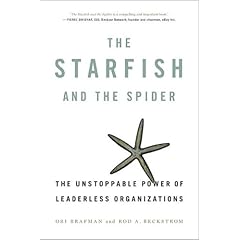Creating massive community involvement: 11,000 Medical Spa comments.
 Fri, January 23, 2009 at 11:38 PM in
Fri, January 23, 2009 at 11:38 PM in  Social Networking
Social Networking  User generated content.
User generated content.
If I hear that phrase one more time... I'll have heard it many, many times.
It seems that it's what guys think you want to hear for some reason when they're pitching a deal that would necessitate the creation of mongo content.
Of course user generated content has been around for a while and it is the foundation on which distributed networks are built upon. Distributed networks that attain market saturation become extremely valuable. (The telephone is a perfect example.)
Now you can go ahead and build some sort of platform, but getting people to generate content for you is not easy. People generally don't want to spend their time helping build out your site. In fact, building out content for your site is just below... we'll, it's below everything.
Usage is king, and evangelists, fanatics are key.
So how do you get users to create content and build value? There are a few tricks and some insight but there's a fair amount of common sense to. You've got to provide value that exceeds the opportunity cost for the end users of staying with their know behavior. See, simple.
Therer are lots of sites that are attempting to build community. I have a site that does pretty well in that it's; generating lots of unique content, has real fanatics and evangelists that extole it's virtues at every chance, provides real value, and is in a niche. Medical Spa MD hosts forums, classified ads, and physician training information for plastic surgeons, dermatologists and medical spas. The forums on the site are by far the most active physician community of any blog on cosmetic medicine. It's received over 100,000 monthly page views and 50,000+ unique monthly visitors with a large majority being not-tech-savvy doctors.
More to the point, there are more than 11,000 comments, many of them are more than 500 works long and are more ariadite than the posts.
Here's a list of some of Medical Spa MDs active comment threads with the comment count:
- Lumenis Active FX VS Reliant Fraxel SR1500 VS Cutera Pearl (177 comments)
- SCITON Forum (Exclusively for Sciton's users) (205 comments)
- What is the best laser for the following: Hair removal, non-ablative skin treatments, wrinkle reduction? (51 comments)
- Palomar Starlux 300 vs. Palomar Starlux500 (60 comments)
- Candela Gentle YAG Vs. Cutera Vantage (51 comments)
- Advice on LASER assistedlipolysis (27 comments)
- Advice for 4th-year medicalstudent? PLEASE! (28 comments)
- Can someone shed some light on the Titan by Cutera? (73 comments)
- Orion Laser Harmony (52 comments)
- Lumenis Malcontents (NOT HAPPY with Lumenis) (103 comments)
- Active Deep Fx Users Group (38 comments)
- Fair esthetician pay (47 comments)
- Legislation about to affect all FL med spa's and MDs (41 comments)
- Who can legally perform laser hair removal? (46 comments)
- Fractional CO2 User Group -physicians only ( 144 comments)
- Cynosure Laser Users? Anyone? (63 comments)
- What's wrong with medical spa consultants (86 comments)
- A Dermatologist that's pissed ad FPs and OBGYNs (106 comments)
- Nothing brings out anger like Thermage
- Let's talkresults: C02 > Plasma > Erbium > Fractional C02 > Fractional Erbium > Pearl
- Palomar Starlux 500 vs. LumenisOne
- Cutera Limelight IPL
- American Laser Clinics: Inside ALC? (144 comments)
- American Laser Clinics Part 1: Armed guards & threats. (275 comments)
- Solana Medspas is out of business? (198 comments)
- And the Mother of all Post Discussions that's in a league all by itself: Dermacare Laser & Skin Care Clinics (1,151 comments. Yep)
Notice that last one? 1,151 comments and counting. That's buy-in.
Physicians are generally not technical, have severe time constraints, and are peculairly hesitant to disseminate information that could come back to haunt them at some time in the future. (Malpractice premiums of $100k a year will do that.)
But, it targets a niche that was not represented. Namely, information for doctors that doesn't come from the marketing and PR departments of technology companies. Previously, all the information available to doctors was provided by companies or advertisers whose revenue is paid by companies. Companies don't like any negative press so the information distribution channels were without any criticism or any meaningful content.
There are any number of ways to exploit current systems and take advantage of existing needs to create real communities of fanatics.




 , subtitled "The unstoppable power of leaderless organizations." This idea will be familiar to many of us who've been watching open source, wikipedia, and other decentralized online phenomena, but I found that the most interesting parts of this book were about the offline world, and how leaderless organizations have succeeded there.
, subtitled "The unstoppable power of leaderless organizations." This idea will be familiar to many of us who've been watching open source, wikipedia, and other decentralized online phenomena, but I found that the most interesting parts of this book were about the offline world, and how leaderless organizations have succeeded there.

